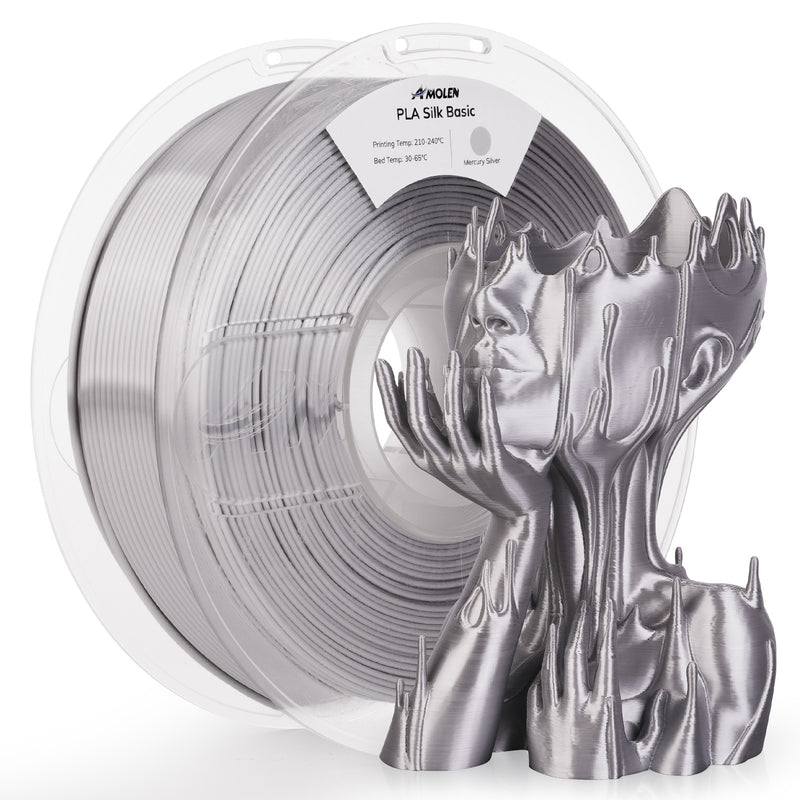Unlocking the Secrets of PLA+: Discover Its Unique Properties and Game-Changing Applications in 3D Printing!
As the world of 3D printing continues to evolve, new materials are emerging that push the boundaries of what is possible. One such material is PLA+ filament, a notable advancement from the standard PLA (Polylactic Acid) that has found its place in numerous 3D printing projects. The significance of PLA+ lies in its enhanced properties, making it a popular choice among hobbyists and professionals alike. Over the years, the demand for more robust and versatile printing materials has driven innovations, resulting in PLA+ — a filament designed to offer better performance, durability, and ease of use. In this article, we will delve into the unique characteristics of PLA+, how it differs from its predecessor, and its varied applications in the ever-growing field of 3D printing.

Understanding PLA+ Filament
PLA+ is an enhanced version of standard PLA, formulated to improve upon its basic composition and characteristics. The primary difference lies in the additives used in its production, which help to increase the filament's strength and flexibility. While standard PLA is known for its ease of printing and biodegradable properties, PLA+ incorporates modified compounds that enhance its mechanical performance. This makes PLA+ not only easier to print but also results in finished products that are more robust and durable. Many users, including friends who are avid 3D printing enthusiasts, have noted that PLA+ provides a smoother printing experience and reduces the likelihood of common printing issues like warping and cracking.
Unique Properties of PLA+
One of the standout features of PLA+ is its unique combination of strength, flexibility, and thermal resistance. Compared to standard PLA, which can be brittle and less heat-resistant, PLA+ exhibits improved toughness and can withstand higher temperatures. This makes it suitable for a wider range of applications without compromising on quality. Users have reported that prints made with PLA+ are less likely to snap under stress and can endure more demanding environments. Additionally, the smooth finish of PLA+ prints is often highlighted, making them aesthetically pleasing for display purposes. These properties have made PLA+ a go-to choice for projects that require a balance of durability and visual appeal.
Differences Between PLA and PLA+
When comparing PLA and PLA+, several key differences come to light. Mechanically, PLA+ outperforms standard PLA in terms of tensile strength and impact resistance, which are crucial for functional parts that need to endure wear and tear. Printability also varies; PLA+ is known for its improved adhesion between layers, which leads to better layer bonding and less chance of delamination. This aspect is vital for users who want to create intricate designs without the risk of structural failure. Scenarios where PLA+ shines include creating prototypes for automotive parts or consumer products, where the added strength can make a significant difference in performance and longevity.
Applications of PLA+ in 3D Printing
PLA+ has a broad spectrum of applications across various sectors, making it a versatile choice for 3D printing. In prototyping, its durability and aesthetic appeal make it ideal for creating models that need to showcase form and function. In the automotive industry, prototypes made from PLA+ can withstand testing without breaking down, offering a reliable option for engineers. Similarly, in consumer products, designers appreciate PLA+ for its smooth finish and ability to hold intricate details, which is essential for items like toys and household goods. Friends in the design field have shared success stories of using PLA+ for creating functional prototypes that not only look good but also perform well under practical conditions.
Summary of PLA+ Advantages
In summary, PLA+ filament represents a significant advancement in the realm of 3D printing, boasting unique properties that set it apart from standard PLA. Its enhanced strength, flexibility, and thermal resistance make it an attractive option for a variety of applications, from prototyping to consumer products. By choosing PLA+, users can achieve higher-quality prints that are not only visually appealing but also functionally robust. As the demand for better materials continues to rise, exploring the benefits of PLA+ can open new possibilities for your 3D printing projects, making it a worthwhile consideration for both enthusiasts and professionals alike.



